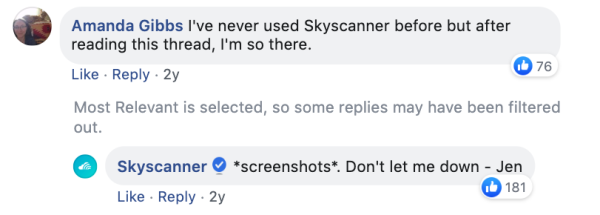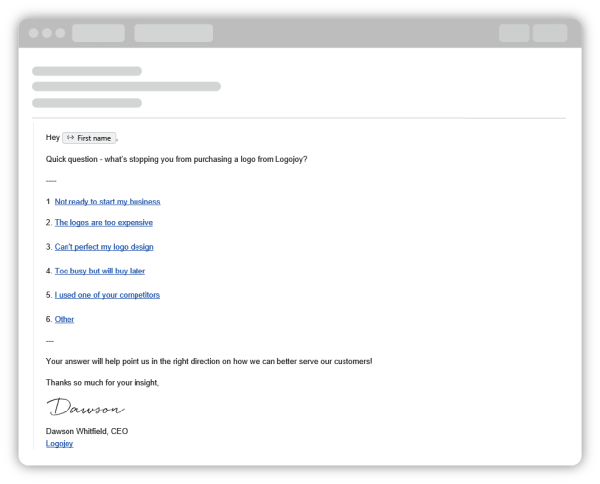Imagine this for a second:
Your business is adding new customers almost every other day of the week. But your sales numbers don't add up. Your profits are suffering. And your existing customer base is dwindling.
Clearly, something seems amiss. Here's what it might be:
You could keep adding new customers to your business every day, but if you don't focus on retaining existing customers, you'll lose out on revenues and profits.
Think of it like this: You're constantly filling water into a bottle, but there's a small hole at the bottom that keeps letting the water out. The end result? The bottle will never fill up completely.
In business terms, we call this 'customer churn.'
What is customer churn?
At its core, customer churn is a business metric. Also known as customer attrition/defection/turnover, customer churn refers to the percentage of customers who stop doing business with a company after a particular amount of time has elapsed. This could happen due to a variety of reasons such as account closure, canceled subscription, contract renewal, among others.
How to calculate the customer churn rate?
Before you jump into the math part, it is critical that you:
A. Quantify actions that led to the attrition.
B. Analyze what defines customer attrition for your business.
Once you've done the above, you can calculate your customer churn rate by factoring in the:
Churn Rate: An Example
The following example will make things crystal clear:
Say you have 100 subscribers at the beginning of the month of which five did not renew their subscription at that point, so the churn rate becomes:

In simplistic terms, the churn rate formula is:
Number of churned customers / Total number of customers = % of churn rate
Note: There are multiple ways to calculate the churn rate. You can measure based on a month, a quarter or a year. The above-mentioned formula is the most widely-used one.
Top 5 strategies to reduce customer churn
1. Understand the driving factor behind customer churn
As obvious as this suggestion may seem, it is important that you first get to the 'why' aspect of customer churn. It may be prudent to ask yourself these questions to dive deep into the customer's psyche and understand their actions and behaviors with respect to your brand:
Q. Why are my customers consistently canceling their subscriptions?
Q. Are they switching to my competitors? Who are my competitors?
Q. Do the customers no longer need my solution? What's changed that led to a dip in customer demand?
Q. Even though my monthly revenues are steady, customers aren’t sticking around long enough for me to recover from my acquisition cost. What's the reason for this?
Key takeaway: They say in order to fully understand something, you have to pull it apart and look at it in its most simplistic, in-depth form. This is exactly what you need to do at this stage. Deep-dive to understand why your customers are leaving in the first place so that you can take the necessary steps and turn around your churn rate.
2. 'First impression' matters
Take this as a thumb rule: The first five minutes with a new customer can make or break your business. Seems like an exaggeration, but it's true. Consider the following example from Skyscanner's social media customer service manager:



Key takeaway: We live in an era where customers wish to view brands as an extension of their personality. They connect better with brands that exhibit human-like behavior. Plus, conversing in a witty and warm tone and style can drive quality user engagement and turn new customers into brand loyalists (with time). So, when communicating with your target audience, make sure to view every interaction as an opportunity to create a first impression.
3. Go the extra mile to offer an exceptional customer service
In theory, every company wants to deliver an exceptional customer experience. But practically speaking, few end up offering an amazing customer experience out of fear of added costs and unnecessary spending. However, this does not need to be the case.
Luckily, today there are numerous tools such as live chat software that can help iron out the common issues that plague customer experience such as delayed feedback, inconsistent support, poor quality engagement, etc.

The 360-degree benefits of using live chat software include:
Additionally, offering your tech-savvy customers an omnichannel integrated and cohesive experience has become the industry norm. Plus, data predicts that:
"Companies that excel at omnichannel customer experiences retain an average of 89% of their clients."
Creating a consistent omnichannel customer experience often leads to:
Key takeaway: Live chat, if used correctly, can act as a trusted advisor for your customers, whereas establishing a strong omnichannel experience helps to boost revenues while retaining profits. This makes sense, as at the heart of a truly omnichannel experience is customer convenience and customer-centricity.
4. Ask for feedback and take appropriate action
As mentioned above, truly listening to what your customers might have to say about the gaps in your business can turn out to be a game-changer. After all, honest and authentic feedback is difficult to come by. Consider the following example for inspiration where the brand lists down the possible reasons for disengagement and making it easier for customers to provide feedback:

Key takeaway: Capturing customer feedback and acting on it has innumerable business benefits - from enhancing your product's offering to improving the customer experience. Instead of dreading rolling out CX surveys and polls, B2B brands should actively embrace this strategy.
5. The golden rule: let some customers churn
Don't get us wrong. Reducing customer churn should be a priority. That said, you cannot force customers to engage with your business if they don't see any real value in your offering. Another factor that drives churn is when brands over-promise and under-deliver.
On the off chance that you do keep pushing the customers when they don't wish to engage with your business time-and-again, they might become frustrated and annoyed - eventually sharing their negative experience and driving negative word-of-mouth publicity, which can be fatal for your business (as shown below):

Key takeaway: As counterproductive as it may seem, customer churn is a natural process that may occur due to increased competition or lack of user engagement. Whatever be the case, B2B companies should try their best to retain customers but not at the cost of looking pushy or authoritative.
In closing
Customer churn is the sad reality of nearly every business today - be it big or small. In fact, global, well-established brands like Netflix and Spotify also struggle with churn rates soaring as high as 9% and 5.1%, respectively.
So if your business is experiencing churn, it is nothing out of the ordinary. What you need to remember is that customer churn is a key sales metric that can help understand how your business is faring and analyze its 'stickiness' (for lack of a better term).
To wrap up, once you've got a better pulse of what's contributing to the churn rate, you can use the following tactics and reduce the percentage (if not eliminate it altogether, which is an impossibility):
Keep these handy strategies in mind and 'churn out' huge profits (pun intended) while retaining a happy and loyal customer base.
Author Bio:

Savan Kharod is a Digital Marketing Professional at Acquire. He loves to share his knowledge and experience in digital marketing, social media marketing, customer service and growth marketing. In his free time, Savan likes to backpack and explore new places. You can reach out to him on LinkedIn or Twitter.


